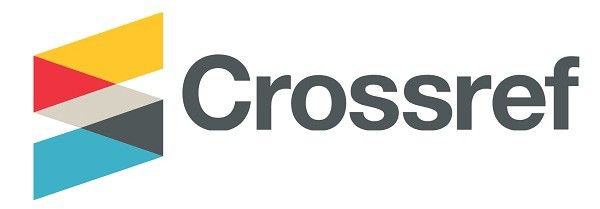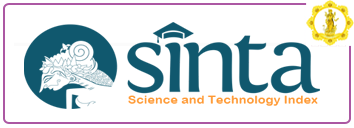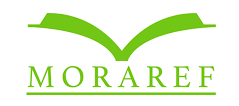Analyzing School Budget and National Achievement Test (NAT)
DOI:
https://doi.org/10.25078/jpm.v5i1.635Keywords:
Achievement Test, School-Based Management, School Budget, Policy Inputs, Student AchievemenAbstract
This study analyzes how the allocation and utilization of school budget of selected schools in a City Schools Division in the Philippines relates with student achievement in the National Achievement Test (NAT). Data were obtained from the participating schools for school years 2012-2013 to 2014-2015 and were analyzed using Pearson correlation coefficients to determine if a relationship existed between specific school financial categories of the Annual Implementation Plan (AIP) and financial reports and the Mean Percentage Score (MPS) in NAT. Data were also analyzed through coefficients of variance to quantify the percent of the related sample that may be explained by the correlation of the variables. Findings include that training and seminar expenses, general services, repair and maintenance expenses and supplies and materials expenses were found to have a significant relationship with the MPS in NAT. Moreover, the positive relationship between financial expenditures and student performance is strongest in Mathematics, and the manner of spending financial resources only affects student performance in many subject areas but not the overall performance in NAT. These findings suggest policy recommendations that aim to guide school heads in the utilization of school budget which would most likely improve student performance in NAT.
Downloads
References
Baker,B., Sciarra,D. & Farrie,D.(2010).Is school funding fair? A national report card. Retrieved from http://www.schoolfundingfairness.org/
Blake, J.G. (2002). How principals develop and administer a school budget. Retrieved from http://paws.wcu.edu/churley/budgets.html.
Brinson, V., & Mellor, L. (2005). How are high performing schools spending their money? A case study. Louisville, KY: American Education Finance Association.
Clover, M. W., Jones, E. B., Bailey, W., & Griffin, B. (2004). Budget priorities of selected principals: Reallocation of state funds (Dissertation). National Association of Secondary School Principals. NASSP Bulletin, 88(640), 69-82. Retrieved from http://search.proquest.com/docview/216034160?
Creswell, J. W. (2009). Research design: Qualitative, quantitative, and mixed methods approaches (3rd ed.). Los Angeles: Sage.
DECS Service Manual. (2000). Retrieved from http://www.deped.gov.ph/sites/default/files/page/2016/ DECS%20SERVICE%20MANUAL_11%20IX%20%20Budgeting,%20Accounting%20and%20and%20Auditing%20Rules%20and%20Regulations.PDF
DepEd Order No. 72, s. 2011. “Intensive Supervisory Support to Elementary and Secondary Schools to Raise Their Achievement Rate in the National Achievement test (NAT)â€.
Grinager, H. (2006). How education technology leads to improved student achievement. National Conference of State Legislatures. Retrieved from https://www.ncsl.org/portals/1/documents/educ/item013161.pdf
Hallak, J.(n.d.).The role of budgets in educational planning. Unesco : International Institute for Educational Planning.Retrieved from http://unesdoc.unesco.org/images/0006/ 000692/069261eo.pdf
Hinkle, D. E., Wiersma, W., & Jurs, S. G. (1998). Applied Statistics for the Behavioral Sciences (3rd, ed.). Houghton Mifflin Company.
Jones, T. B., & Slate, J. R. (2010). The 65% instructional expenditure ratio and student achievement: Does money matter? Unpublished manuscript. Sam Houston State University, Huntsville, TX.
Joubert R. & Bray E. (2007). Public school governance in South Africa. Pretoria, South Africa: Interuniversity Centre for Education Law and Education Policy.
Lagrone, C.M. (2002). A study of the factors affecting high performing and low performing high schools in texas (Dissertation).Retrieved from ProQuest Dissertations and Theses database. (UMI No. 3074262).
Levy, P. (2002). Interactive Whiteboards in learning and teaching in two Sheffield schools: a developmental study (Masters dissertation, University of Sheffield, U.K.). Retrieved from: http://dis.shef.ac.uk/eirg/proiects/wboards.htm
McCombs, B. L. (2003). A framework for the redesign of K-12 education in the context of current educational reform. Theory into Practice, 42(2), 93-101.
McCoy, M.S. (2014). Influences of selected budgetary and school factors on the academic achievement of third grade students (Dissertation).Retrieved from ProQuest Dissertations and Theses database. (UMI No. 3662722).
Miller, K. (2002). Resource allocation: targeting funding for maximum impact. Office of Educational Research and Improvement. Washington D.C. pp. 2-8
Odden, A., & Picus, L. (2003). School finance: A policy perspective. New York: McGraw-Hill.
Pugh, G., Mangan, J., & Gray, J. (2011). Do increased resources increase educational attainment during a period of rising expenditure? Evidence from English secondary schools using a dynamic panel analysis. British Educational Journal, 37(1), 163-189. Retrieved from http://dx.doi.oru/10.1080/01411920903452563.
Quint (2011). Professional development for teachers. MDRC, P-12.
Quismundo, T. (2011, September 22). 2/3 of Philippine high schools obtain low NAT scores. Philippine Daily Inquirer.Retrieved from http://newsinfo.inquirer.net/63039/23-of-philippine-high-schools-obtain-low-nat-scores
Rothstein, R. (2011). How to fix our schools. Education Digest, 76(6), 32-37.
Schneider, M. (2002). Do school facilities affect academic outcomes? National Clearinghouse for Educational Facilities. Retrieved September 1,2007 from www.edfacilities.org.
World Bank. (2010). Inclusive education: An EFA strategy for all children. Retrieved on December 12, 2016, from http://www.worldbank.org /education









